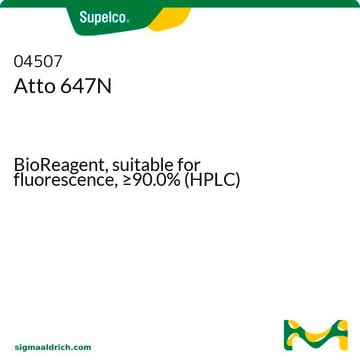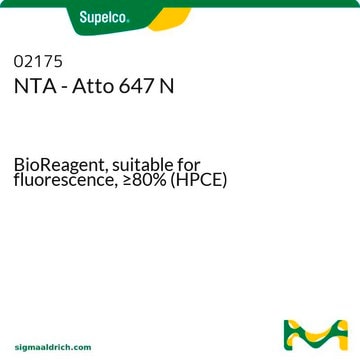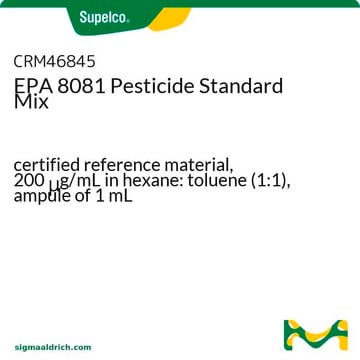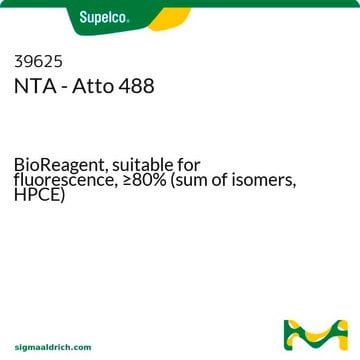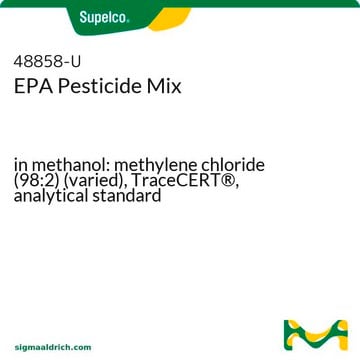Per the product technical bulletin, the labeling reaction is sufficient for 1 mg of protein at a concentration of 2–10 mg/mL, and the two-hour incubation step is at room temperature.
76508
Atto 647N Protein Labeling Kit
BioReagent, suitable for fluorescence
Sélectionner une taille de conditionnement
1 070,00 $
Sélectionner une taille de conditionnement
About This Item
1 070,00 $
Produits recommandés
Gamme de produits
BioReagent
Niveau de qualité
Fabricant/nom de marque
ATTO-TEC GmbH
Fluorescence
λex 647 nm; λem 661 nm in 0.1 M phosphate buffer, pH 7.0 (recommended)
Adéquation
suitable for fluorescence
Température de stockage
2-8°C
Vous recherchez des produits similaires ? Visite Guide de comparaison des produits
Description générale
Informations légales
Vous ne trouvez pas le bon produit ?
Essayez notre Outil de sélection de produits.
Code de la classe de stockage
10 - Combustible liquids
Point d'éclair (°F)
Not applicable
Point d'éclair (°C)
Not applicable
Faites votre choix parmi les versions les plus récentes :
Déjà en possession de ce produit ?
Retrouvez la documentation relative aux produits que vous avez récemment achetés dans la Bibliothèque de documents.
Les clients ont également consulté
Articles
Protein labeling kits with Atto and Tracy dyes provide easy fluorescent labeling of purified proteins, enzymes, and antibodies.
-
Is there an optimal volume of protein at c=2mg/ml (e.g. is it better to have 1 mg in 0.5ml PBS or 2mg in 1ml PBS). Incubation of 2h is performed on RT or +4C?
1 answer-
Helpful?
-
-
Will this kit efficiently label protein on a much smaller scale of < 20ug of protein or at concentration below 2 mg/ml?
1 answer-
The dye should be reconstituted in 20 ul of DMSO and the total volume added to 1 mg of the antibody (at 2-10 mg/ml). If the amount of antibody is less, it needs to be at 2 mg/ml, and the amount of dye added to the antibody solution should be proportionally reduced. For example, if there is 200 ug of antibody (at 2 mg/ml), 4 ul of the DMSO solution of the dye should be added to the antibody. It's important for the user to use very accurate pipettes to avoid adding too much dye to the antibody, which could result in the labeling of the antibody in the antigen-binding site. If less protein is used, the amount of dye can be reduced. There is always an excess of dye to ensure labeling efficiency, and a part of the dye will be separated (as unbound dye) by a purification step afterward. The proteins need to have a minimum concentration due to the strong hydrolysis tendency of the NHS-functionality. If the protein solution is too dilute, the dye will be hydrolyzed before it reaches an amine-group of a protein.
Helpful?
-
Active Filters
Notre équipe de scientifiques dispose d'une expérience dans tous les secteurs de la recherche, notamment en sciences de la vie, science des matériaux, synthèse chimique, chromatographie, analyse et dans de nombreux autres domaines..
Contacter notre Service technique
